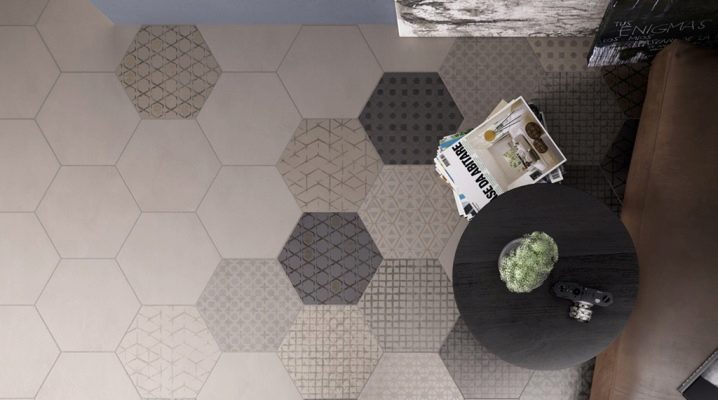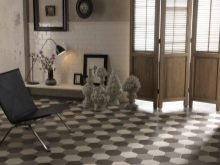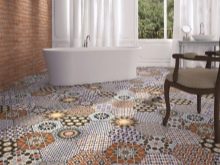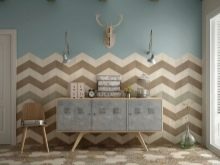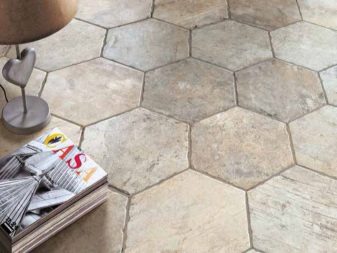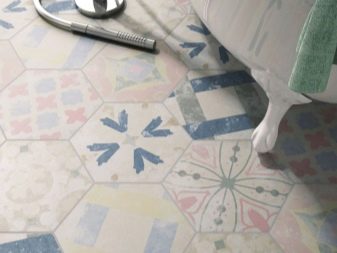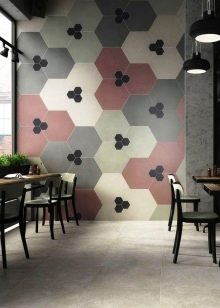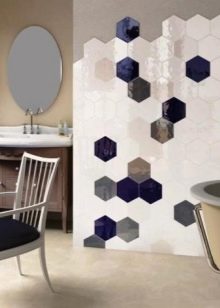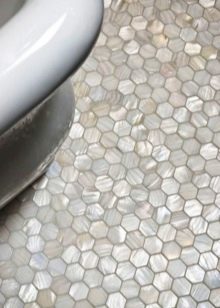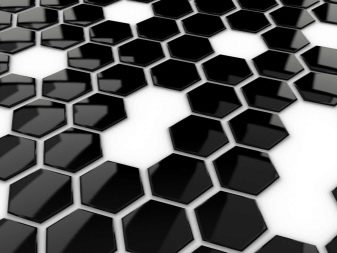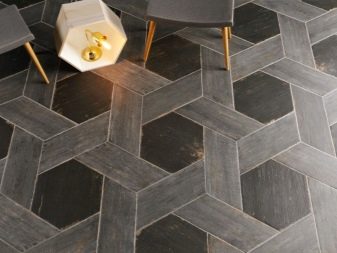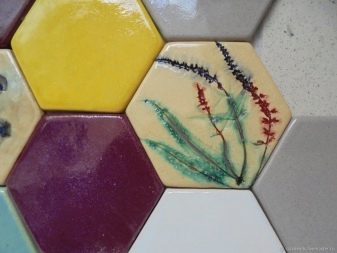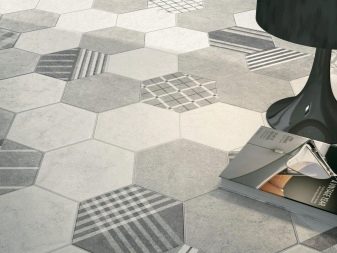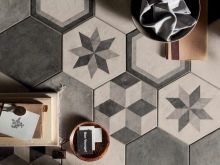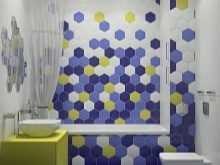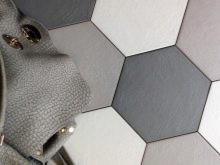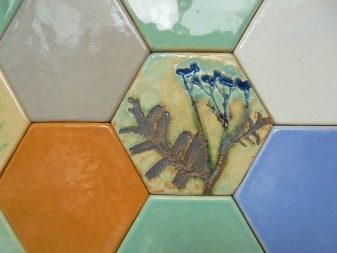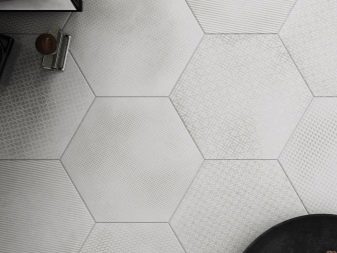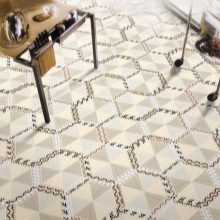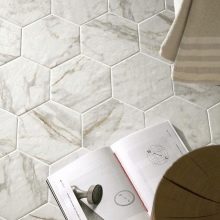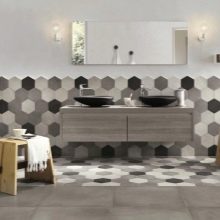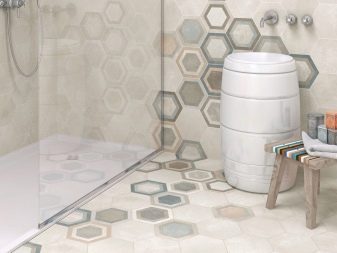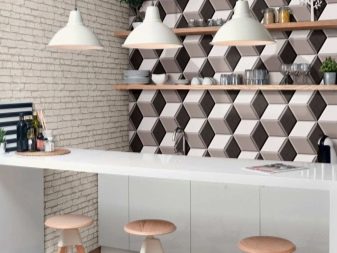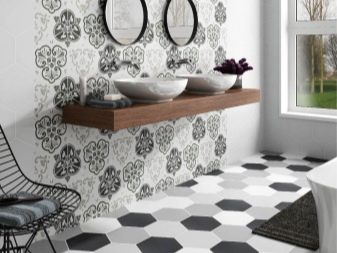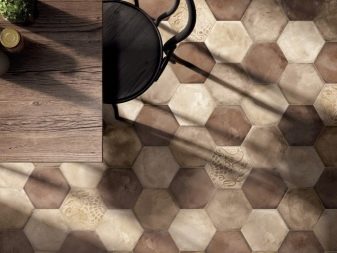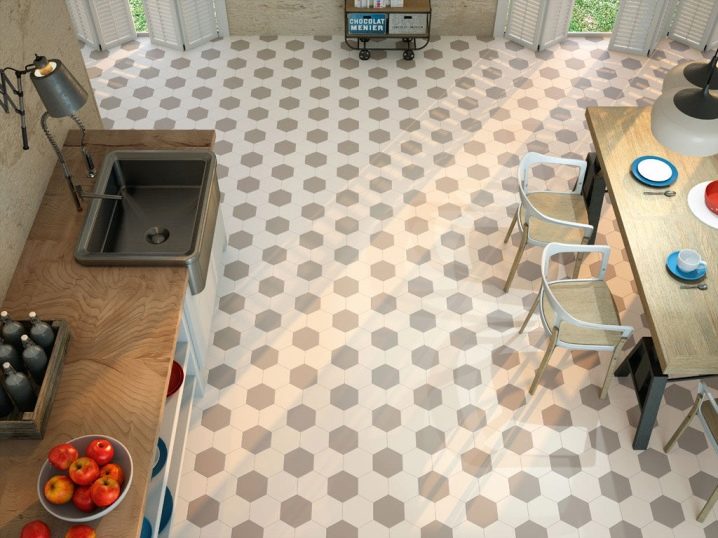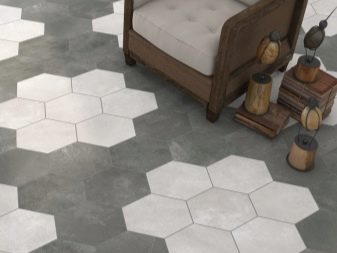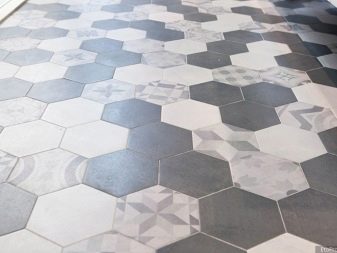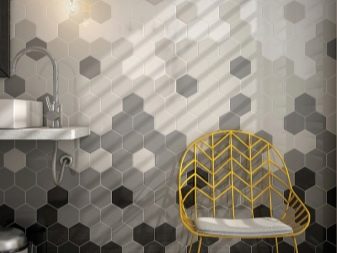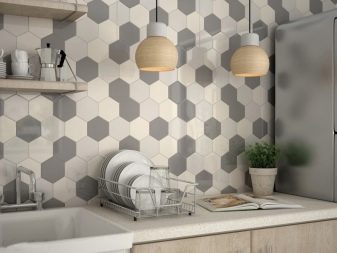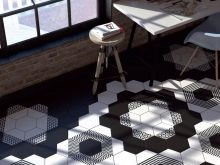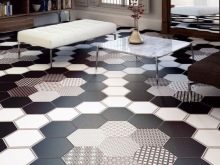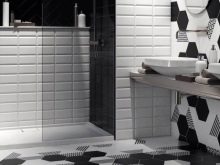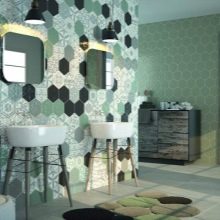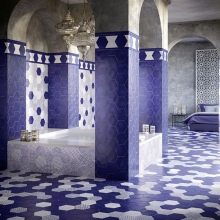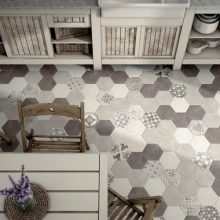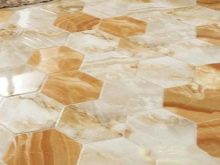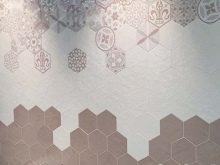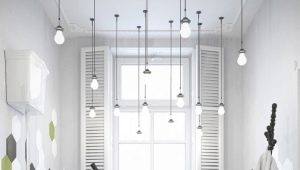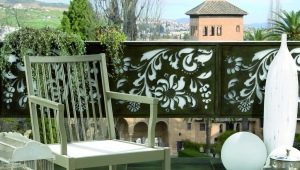Hexagon floor tiles: interesting interior design ideas
The six-sided tile is a finishing material of an unusual form which can become a highlight of any interior. With it, you can finish any surface or use for decoration. It is important to study the advantages and disadvantages of such a coating in order to understand how to properly use it in the interior.
Special features
Hexagon tile is a hexagonal elements that are used to finish the floor and walls. It looks unusual, because the standard tile has the shape of a rectangle or square, and these models are based on a regular hexagon. Usually, such products are smaller than other types of tiles. For its manufacture, manufacturers use mostly natural compounds that are poured into special forms. Most of these models are ceramic products.
Hexagon coating is differently called "tile-cell." This name is due to the fact that the elements of such a coating looks something like a honeycomb from a beehive. This similarity can be seen especially in the case when a large space is faced with such a coating: both the floor and the walls.
Hexagon patterns look more interesting than other types of tiles. It is combined in many different ways.
With it, you can create an interesting pattern on the walls or on the floor, using multi-colored combinations. You can stack it according to different schemes and principles.that is the main feature of such a coating.
This is mainly tile, but there are also hexagonal coatings of porcelain. Floor models are 5 to 12 mm thick.. But there are more thin wall coverings. It all depends on where you plan to lay this material.
Advantages and disadvantages
Hexagonal elements are very different from other models. This mainly concerns the styling process, as well as external qualities. The unusual hexagonal shape is now in vogue; it often replaces classic rectangular or square ceramics.Thus, the main advantage is the relevance and originality of such a coating.
In addition, there are a huge number of options and ways of laying this coating, and many schemes simply fascinate. With it, you can finish the floors and walls in apartments with interiors of any stylistic orientation. Manufacturers present a wide variety of colors and colors.. Moreover, these elements can also be applied to additional patterns or drawings that are collected and combined with each other. Thus, each such tile can be a small piece of a large and beautiful puzzle.
In addition, you can choose as the smallest tile size of about 5 cm, and larger items with a radius of up to 15 cm. As for the technical characteristics of hexagonal models, they depend mainly on what material was used for their manufacture. Thus, a hexagonal tile is made of high-quality clay and undergoes several firing cycles, since, thus, its fragility is reduced.
In general, such a coating, like other similar models, is moisture-resistant, durable and wear-resistant. The coating serves for a long time and tolerates mechanical and temperature effects.
But you can note some of the disadvantages of such tiles: it is quite difficult to lay and install yourself. Tiles of square and rectangular shape are easy to join, but such tiles need to be laid very smoothly and at the same time know some subtleties and rules. Laying in a specific pattern is a time consuming process., because even installation without observing the pattern takes several times longer than laying tiles of standard shapes.
Another disadvantage is the high cost of such material. As a rule, standard models are much cheaper, because in general they are simple in design.
The disadvantage that results from the complex forms of this material is the complexity of its cutting and the high probability of chipping. Thus, a large number of faces on the tile makes hexagonal models less durable, therefore when falling, such an element is broken more likely than the usual rectangular version.
Kinds
Hexagon tiles may vary depending on their texture. It is of the following types:
- Glossy. Such products in the interior look very bright, since they are covered with glaze.This additional layer makes the tile more expressive and shiny, as well as saturates and emphasizes its color. But such a coating is rather slippery, so it is not customary to use it in cheeses, for example, in the bathroom.
- Matte finish. This is a tile model that is porous and does not pass the glazing procedure. But there is a second version of the manufacture of such ceramics: in the process of creating such a material it is strongly pressed and not covered with additional compounds. Thus, the hexagonal tile will be more dense and hard, and, accordingly, less fragile. But the matte options in the interior do not look so elegant.
- Relief. This variant of ceramics is characterized by the presence of a volume texture, and the coating itself may have a glossy or matte top layer. Distinguish it only interesting patterns applied on top. Thus, this hexagonal tile is the best option: it is difficult to slip on it and looks the most profitable.
- Polished. This is another interesting type of hexagonal ceramics, which is a coating,made according to the following technology: the composition is calcined and cleaned the top layer, and then polished it for smoothness. Thanks to this, the tile becomes thinner and slightly glossy. But such six-sided models are considered the most fragile and thin.
- Spattered tile. Such hexagonal models undergo additional polishing, but not completely, but only partially. On their surface a small roughness is formed, but there is no pronounced relief. Such models are popular for decorative finishes and are mainly used on wall surfaces.
Design
Currently, manufacturers are many varieties of hexagonal tiles, which has already applied ornaments and patterns. For example, models with a pattern look more bright. As a rule, manufacturers apply asymmetrical and abstract patterns.. Geometric shapes and straight lines are not used to decorate such a tile, since it already has many right angles. In addition, they visually spoil its beautiful shape.
Patterns with ornaments are great for high-tech or minimalism. Looks great in such interiors and mirror tiles in the form of honeycombs.It draws attention to itself and allows you to fill the interior with light, to place fashionable accents.
Tile design may vary in color. Thus, within the framework of one collection, manufacturers present models made in adjacent shades of the same color range. Thus, you can select bright areas on the floor and lay out interesting geometric patterns: flowers, rhombuses and other shapes. Even whole pictures are forged with small hexagonal tiles.
Another design option for such a tile is the decoration in one monochrome tone. And its texture can be artificially aged, that is, it will have rubbing and roughness. Such elements are able to make the interior more comfortable and slightly vintage. This solution is perfect for Provence or retro style.
Separately, it should be noted the design of laminated hexagonal tiles. These products are made by injection method. Thus, the texture of the tile can transmit other materials: imitation of marble, parquet, wood, metal, leather.
A floor or wall lined with such tiles will look stylish and elegant. It is used as a focus on individual items of interior, and for the overall decoration of the floor and walls.
Piling
In order to perfectly lay the hex tile on the walls or on the floor, it is necessary to carefully align and prepare all surfaces. This is due to the fact that such elements are rather small. Because of the large number of faces, they can focus attention on some surface defects, because such a tile will not be able to lie flat on the unprepared floor - the edges will stand out and the floor will seem curved.
If fine tiles are used for finishing, then a thin layer of glue should be applied.. This should be done with a special comb. Before laying the hex tile, you must first apply a primer to the surface.
Laying such a tile, first of all you need to lay it out on a piece of hardboard, gathering the necessary pattern or laying it out like a mosaic. Then you need to put glue on it and leave for some time. After that, proceed to the installation.
Such a tile implies a quick divergence of the seams, therefore it is necessary to control each row and press it tightly. Moreover, for even and high-quality installation, it is better to use special construction crosses of no more than 3 mm in size.. It is necessary to calculate where the tile floor will fit to the corners. In this place it should be properly trimmed. In order to make the edges even, it is necessary to use a construction laser.
DIY tile laying - in the next video.
Manufacturers
Now manufacturers represent a wide selection of models of ceramic tiles in the form of honeycombs, since such coverage is popular. So, one of the most famous brands is the manufacturer Kerama marazzi. This is a domestic manufacturer, which is ceramic and porcelain tiles, including hex-hex.
You can choose the floor and wall tiles included in the Neapolitan, English, Indian, Italian collection. Moreover, within these collections there are different color palettes and sizes of hexagonal tiles. Separately, the manufacturer Kerama Marazzi is tile for the bathroom and kitchen, as well as for residential premises.
Most hex models are represented in the collection of Buranelli. These are models in black and white, decorated in Venetian style. They look elegant and attractive. Such finishing materials are great for interior decoration in the style of modern, minimalism or high-tech.
Baldocer - This is another popular manufacturer, which has a Spanish origin. So, the materials from this brand won the trust of consumers due to its high impact resistance and reliability. A feature of this tile is the inclusion of kaolin compounds in the composition. All models undergo several firing cycles and have a low level of porosity.
In addition, buyers are attracted by a wide selection of collections and colors. Baldocer honeycomb hexagonal tiles have a sophisticated design. Presented as a model for finishing classic interiors, as well as newer and more stylish solutions.
Italian brand Impronta also relies on the quality characteristics of hexagonal tiles. These models are composed of carbon elements. Thus, on the surface remains a protective film. But thanks to this additional coating, which also plays a decorative role, the hexagonal models look more stylish and interesting. Basically, such models include ceramics and porcelain.
The new collections of the brand Impronta presents hexagon patterns in marble. Moreover, the coating has interesting pearlescent streaks with a glossy shine.Tiled coverings from this Italian brand look elegant and elegant.
